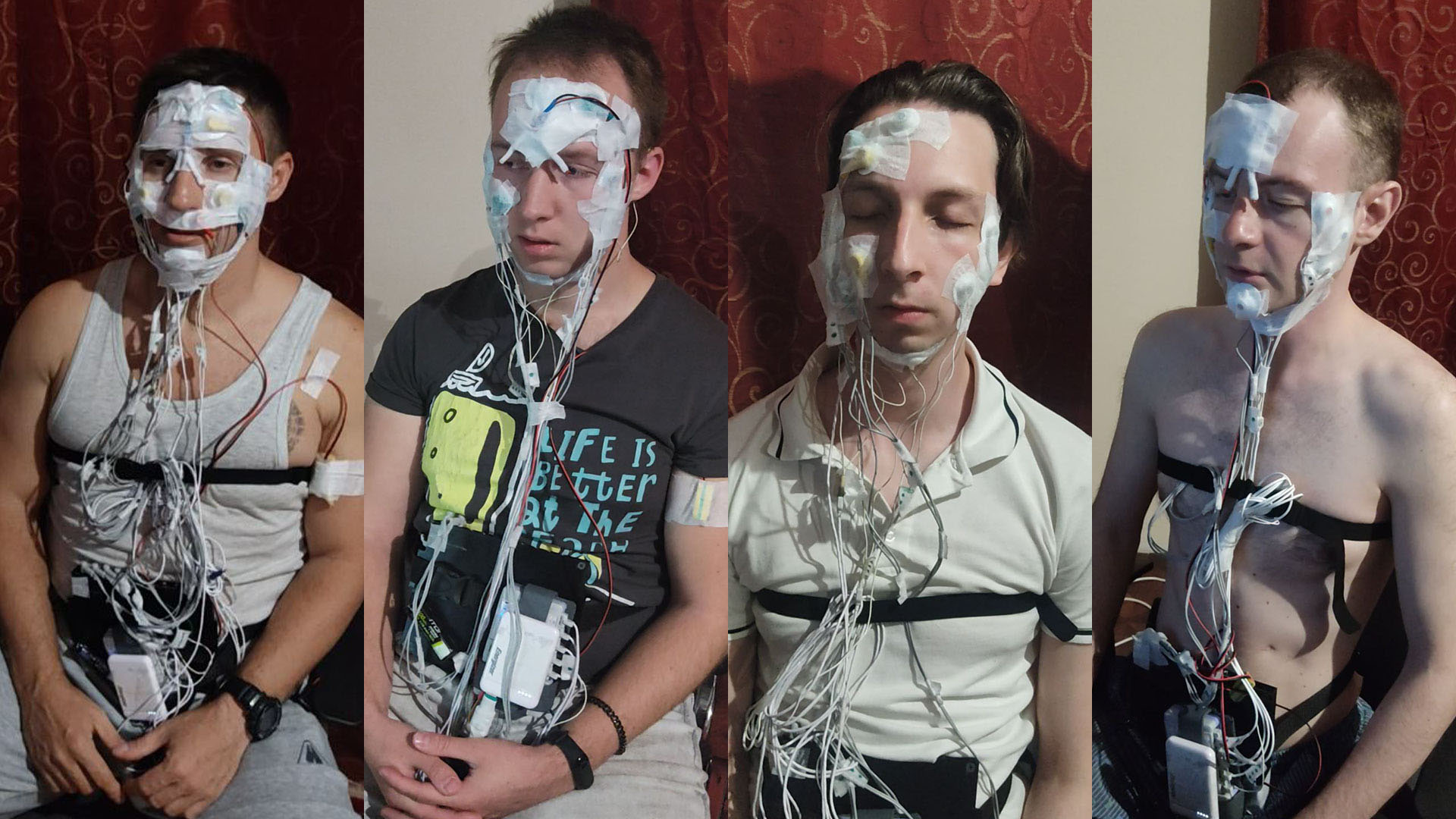In 1975, English psychologist Dr. Keith Hearne first established contact with a person in a lucid dream (LD). At that time, the dreamer simply performed a predetermined sequence of eye movements to demonstrate lucidity. In 2021, a widely discussed study was published by an international group of scientists in which dreamers solved arithmetic problems also using eye movements. However, we are yet to speak with lucid dreamers using words, rather than “yes/no” signals.
Researcher from REMspace, Michael Raduga, developed an artificial language called Remmyo and tested it with colleagues Andrey Shashkov and Andrey Vanin. The language is based on only six distinctive electromyographic (EMG) sounds which can be detected by facial EMG sensors despite the sleep paralysis experienced by lucid dreamers. A software can then type out Remmyo words, translate them into any language, and vocalize them in real-time.
To test this technology, four volunteers learned several simple phrases in Remmyo. Then were then required induce lucid dreams (under polysomnographic observation in the laboratory) and pronounce these phrases. Efficiency ranged from 13 to 81%, but this was only the first attempt to “hear” people’s speech from within dreams.
The authors predict that the quality of Remmyo decoding will at least double in 2023. As a result, people will be able to transfer more information from lucid dreams and communicate with each other. It is already possible to stream lucid dreaming speech online, and many other opportunities could eventually arise.
How would you use such an opportunity?
The article was published in March 2023 in the journal Psychology of Consciousness: Theory, Research, and Practice.
Get all the latest news about lucid dreams via our channels on Telegram, Instagram, Facebook




